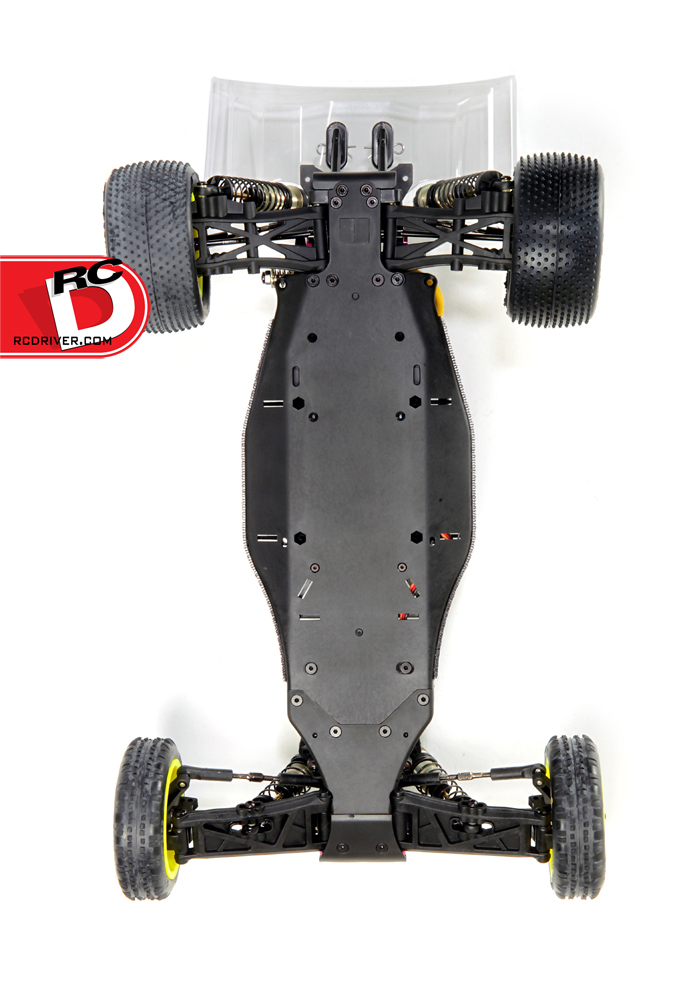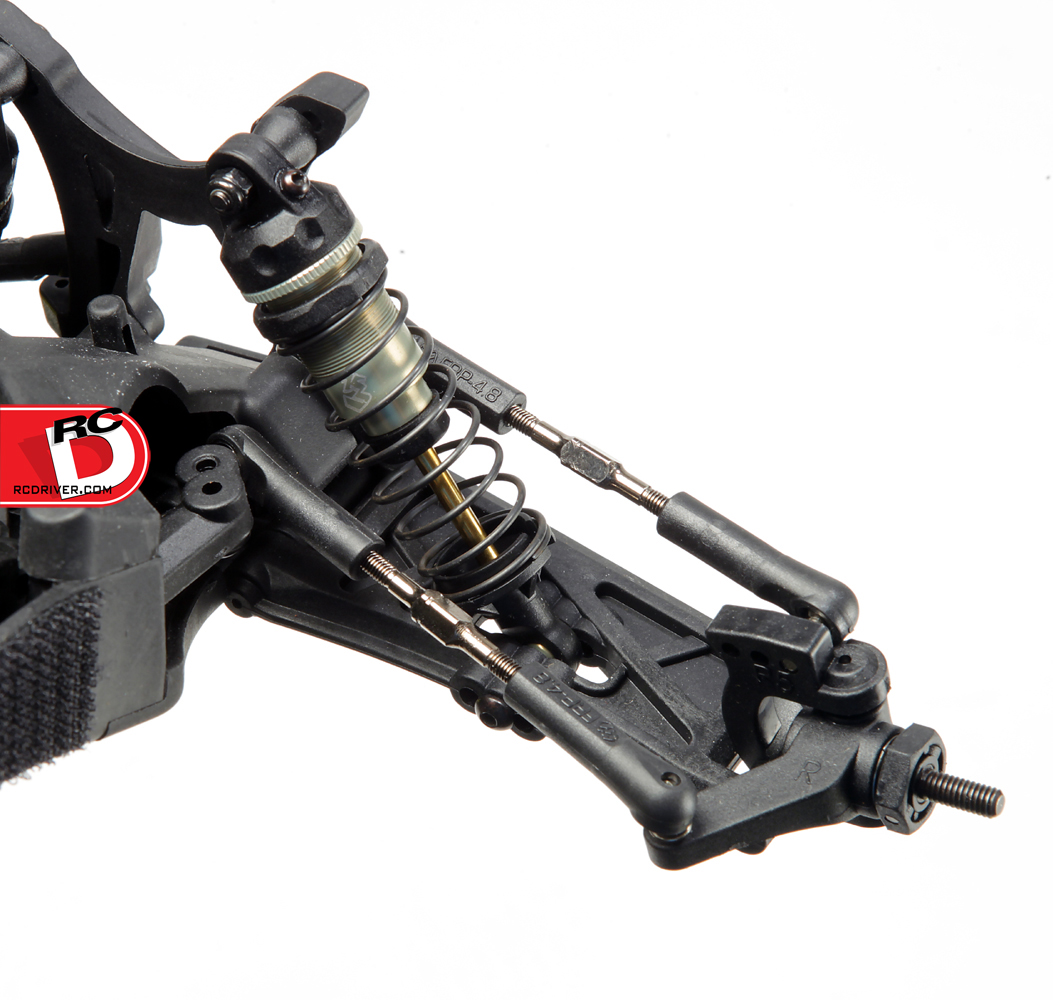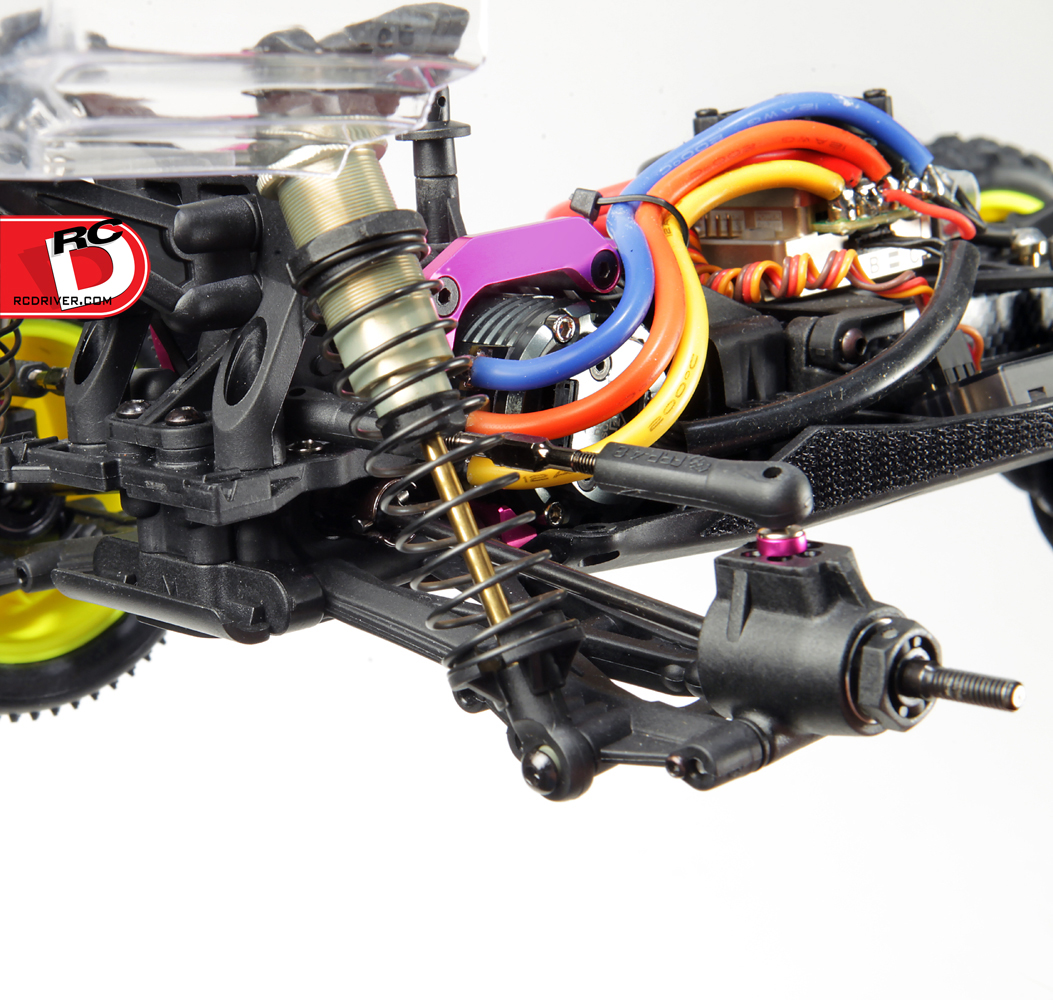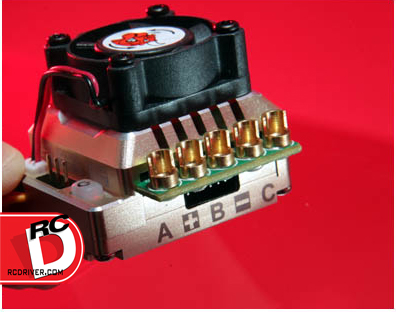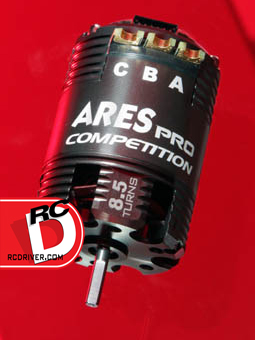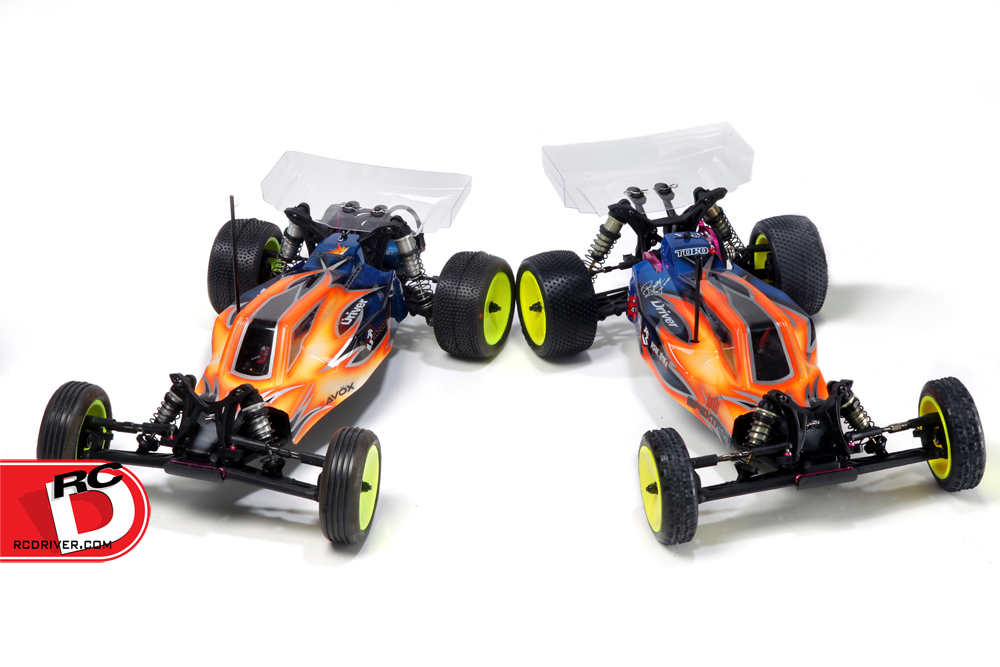
Several months back, I was fortunate enough to get a pre-production sample of the 3Racing Cactus, a 2WD off-road buggy. While the Cactus was designed to be built in either rear or mid-motor configuration, the buggy I received came pre-assembled in rear-engine form and did not have the necessary items to be converted to mid-motor. After speaking with my contact over at 3Racing, we decided I should get a full production version of the Cactus, a factory-sealed kit for me to build in mid-motor so I could accurately know everything this buggy has to offer.
AT A GLANCE
WHO MAKES IT: 3Racing
WHO IT’S FOR: Highly Competitive 2WD 1/10-scale off-road racers
HOW MUCH: $179.99
BUILD TYPE: Kit
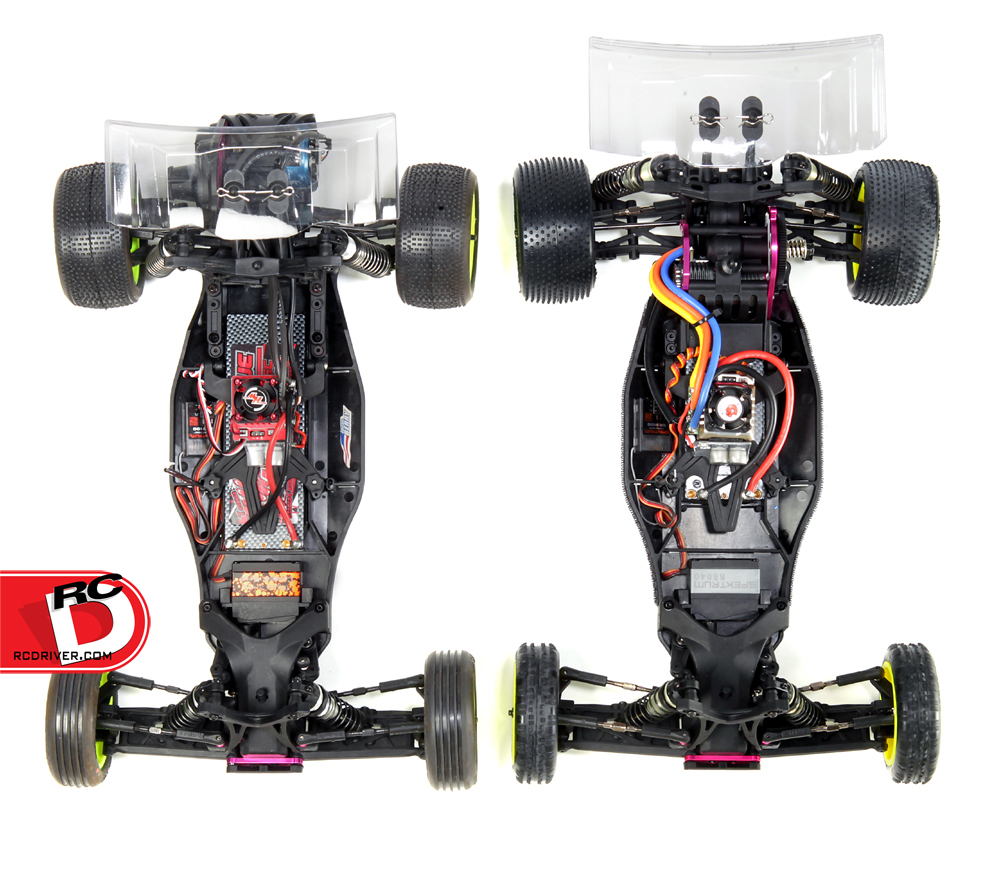
PROS
+ I really like the steering bellcrank
+ Very plush shocks
+ Cab-forward style body comes standard
+ Compatible with popular rims
+ Narrow chassis
+ Can be built rear or mid-engine
+ Less chassis flex than the rear-motor configuration
+ Comes standard with quality AKA tires
CONS
- Difficult getting the motor in and out of the chassis
- Left rear suspension arm hits the gear cover
- I would like to see a gear diff for the mid-engine configuration
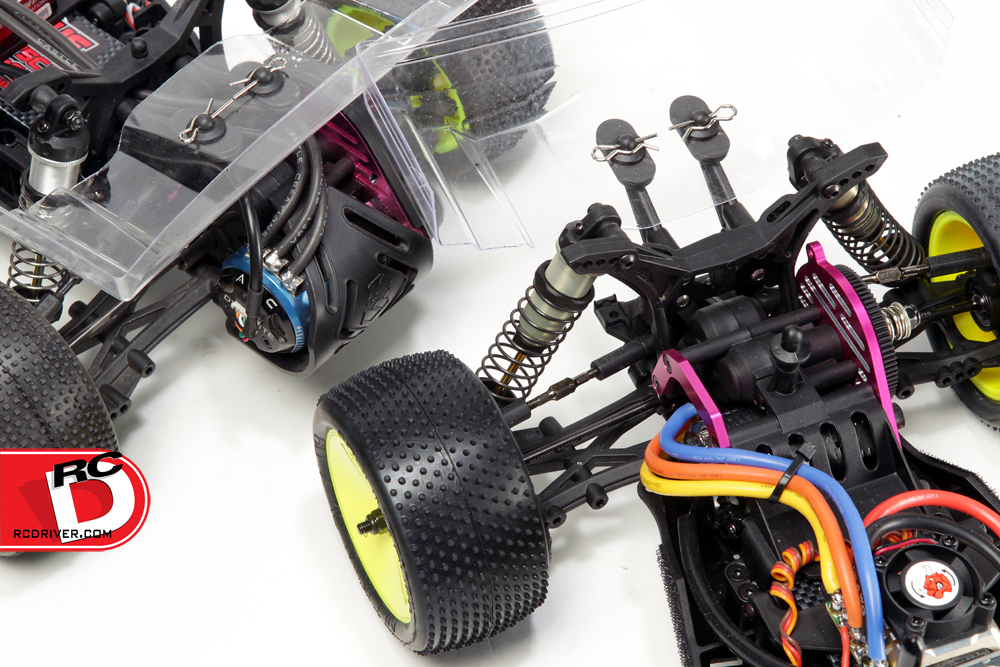
Authors Opinion: While the 3Racing Cactus does not come with the flashy name recognition of some more well-known buggies, it is still a top-notch contender. There is little to improve upon from the original near-bulletproof design, making it very appealing to just about everyone. Considering that it is great value and a solid performer, the Cactus is bound to start showing up in greater numbers at high traction and low traction tracks from coast to coast.
Star rating (1-5) = 4
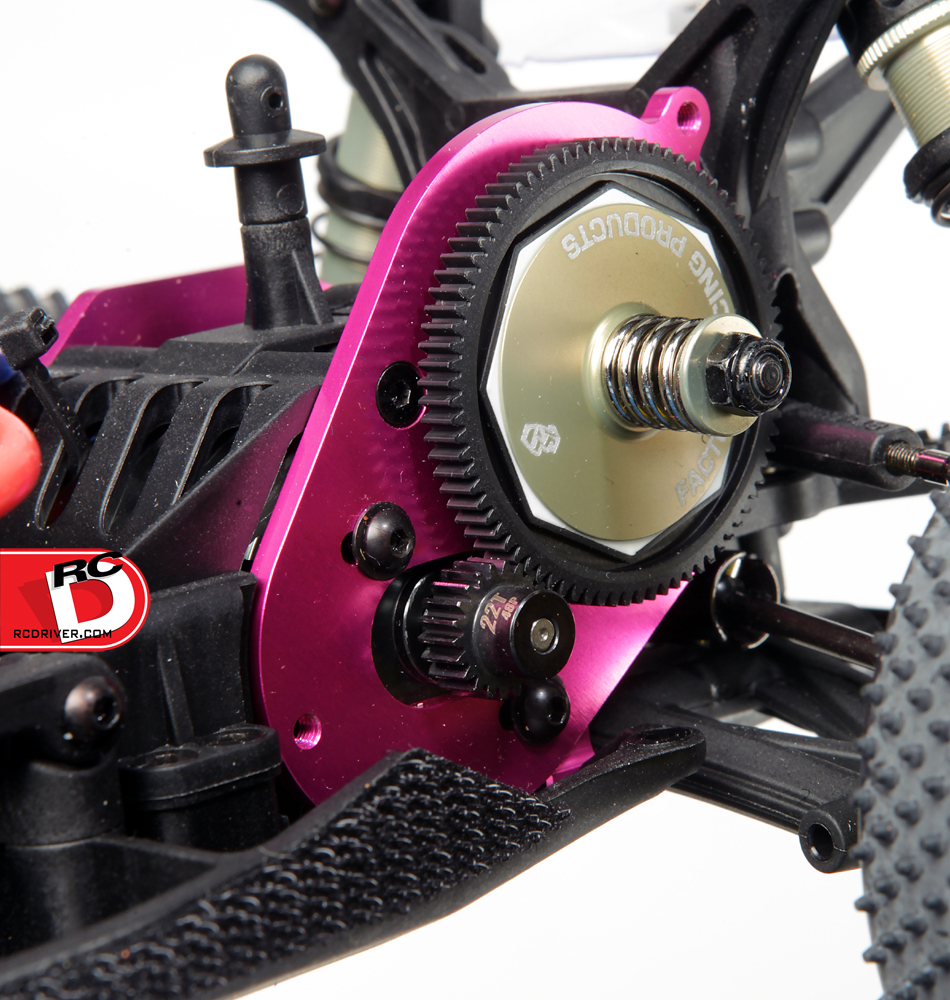
What you need to know –
- The chassis on the Cactus is made from two pieces, a nose section and a main section. The main portion incorporates wiring tunnels to keep things neat and tidy under the body. Both pieces are made from composite plastic and have more flex when built in the rear-engine configuration than the mid-engine configuration. This is good because when using the Cactus on loose dirt in the rear-engine configuration, the flex will help increase traction. The chassis is narrow so the ESC must be mounted centrally, above the battery on a hinged battery hold-down or graphite ESC plate.
- Found on all four corners of the Cactus are 12.5mm big bore oil-filled shocks. Each shock features a threaded aluminum body that is PTFE-coated with an adjustable pre-load nut for quick easy adjustment. The plastic shock caps feature a bleeder valve that makes building the shocks quite painless. The shafts are TiNi coated to resist scratches. The kit comes with 1.2, 1.3 and 1.4 pistons. I used the 1.3 pistons when building them and went with 30wt oil.
- The Cactus features a dual bellcrank steering system with each bellcrank riding on quality ball bearings for smooth and consistent steering response. The center link features horizontally mounted ball studs that the steering turnbuckles attach to. Because the ball studs are horizontally mounted, it allows the turnbuckles to pivot more freely as the suspension moves and also allows for painless Ackermann adjustment. The bellcrank does not incorporate a servo saver like other vehicles. 3Racing incorporated this into the steering arm that attaches to the steering servo, should you wish to use it
- For rear engine use, the Cactus utilizes a 3-gear transmission with the standard top shaft gear, idler gear and ball differential gear. When in the mid-motor configuration, the transmission uses a different case and is a 4-gear configuration. It also has a 2-pad type slipper clutch, similar to what is used on vehicles by Team Associated, with a large adjustment spring to smooth out acceleration and protect the drivetrain. A durable black plastic gear cover, with an easy to remove cap, keeps dirt and debris away from the pinion and spur gears.
- 3Racing equipped the Cactus with an increasingly popular cab-forward style body. Not only does it look sharp, it increases down force to improve steering and traction. Like when I reviewed the rear engine version, I sent the body to Bradley Farmer for paint. I asked him to duplicate the hot design he came up with the first time so I’d have matching vehicles. Bradley uses Parma paints, is one of the best painters on the planet and a great many factory drivers seek him out to paint their lids. As usual, he made yet another masterpiece for me!
- Yellow dish wheels came with the Cactus that I received. They mount to 12mm hex adapters and feature the same offset as the Team Associated B4.2 off-road buggy. 3Racing also included a nice set of AKA tires and red inserts with the Cactus, three Rib fronts and Impact rears. While these would be great on a rear-engine buggy, they would not be ideal on a mid-motor buggy. Because of this, I went with Mini Pin tires in the rear and Cut Stagger tires in the front by Schumacher. They are more suited to off-road carpet racing like I will be using this Cactus on.
ITEMS NEEDED
- Steering servo
- Radio system
- Electronic speed control
- Motor
- Battery pack
- Pinion gear
ITEMS USED
- SkyRC Toro TS120 Competition ESC with Aluminum Case
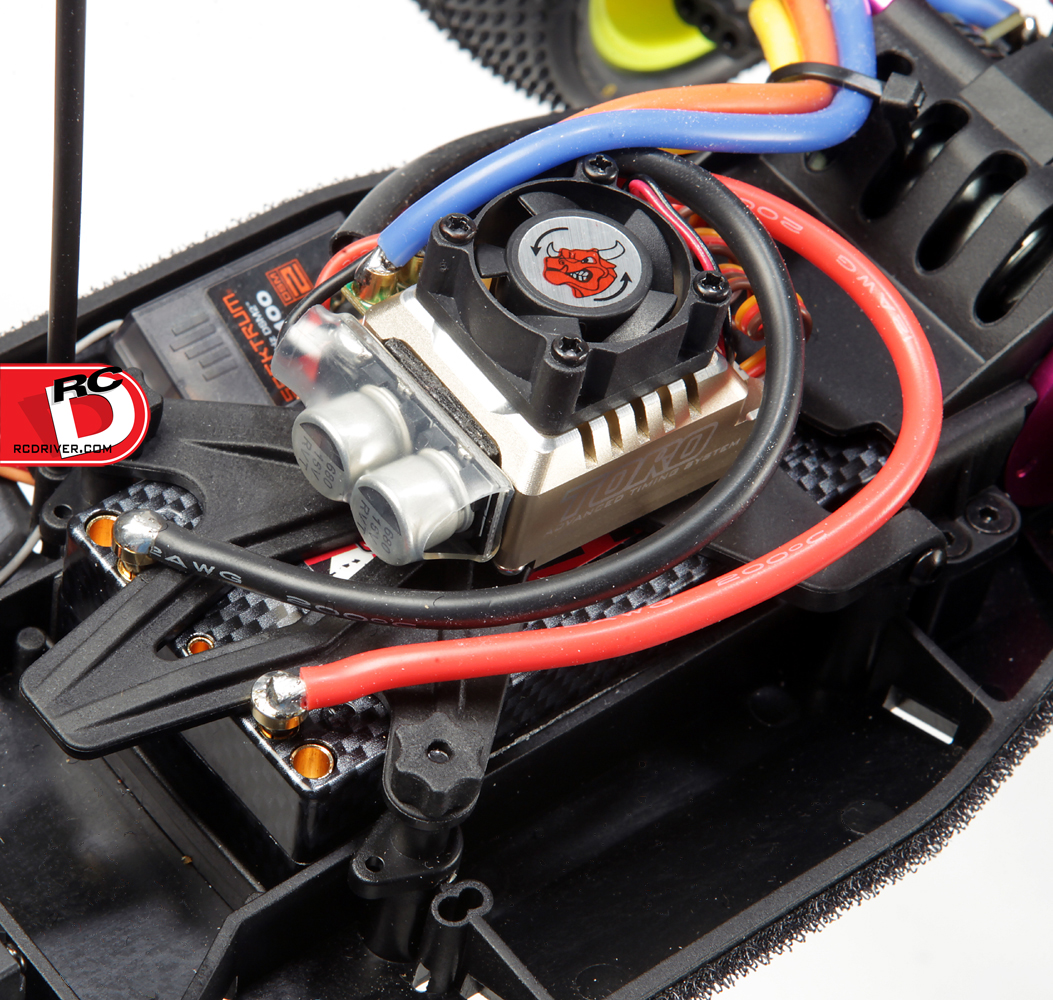
SkyRC might not be a household name when it comes to electronics but they should be. The Toro TS120 Competition ESC with Aluminum Case is no larger than similar speed controls and has some spectacular features that other manufacturers are still working to perfect, like the ability to be programmed via Bluetooth with an iPhone. I mounted the TS120 on the center-hinged battery strap on the Cactus and wiring, for the most part, was very straightforward. While it did come with a sensor wire, I opted for a silicone one from TQ Wire. On the track, the stock, out-of-the-box settings were just about spot on. It has an exceptionally smooth power band and linear break. I ran the Cactus hard for about six to seven minutes and throughout the run, acceleration and braking remained consistent. When I pulled the Cactus from the track, I decided to dial out some drag brake using the Bluetooth module and my iPhone. The process took two minutes and the result was exactly what I hoped for.
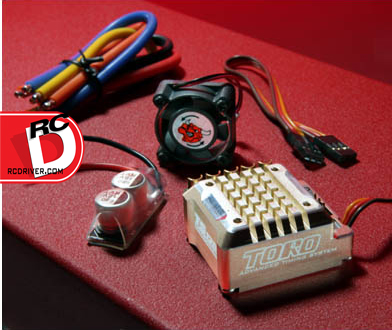
- SkyRC Toro 8.5T Ares Pro Competition Brushless Motor
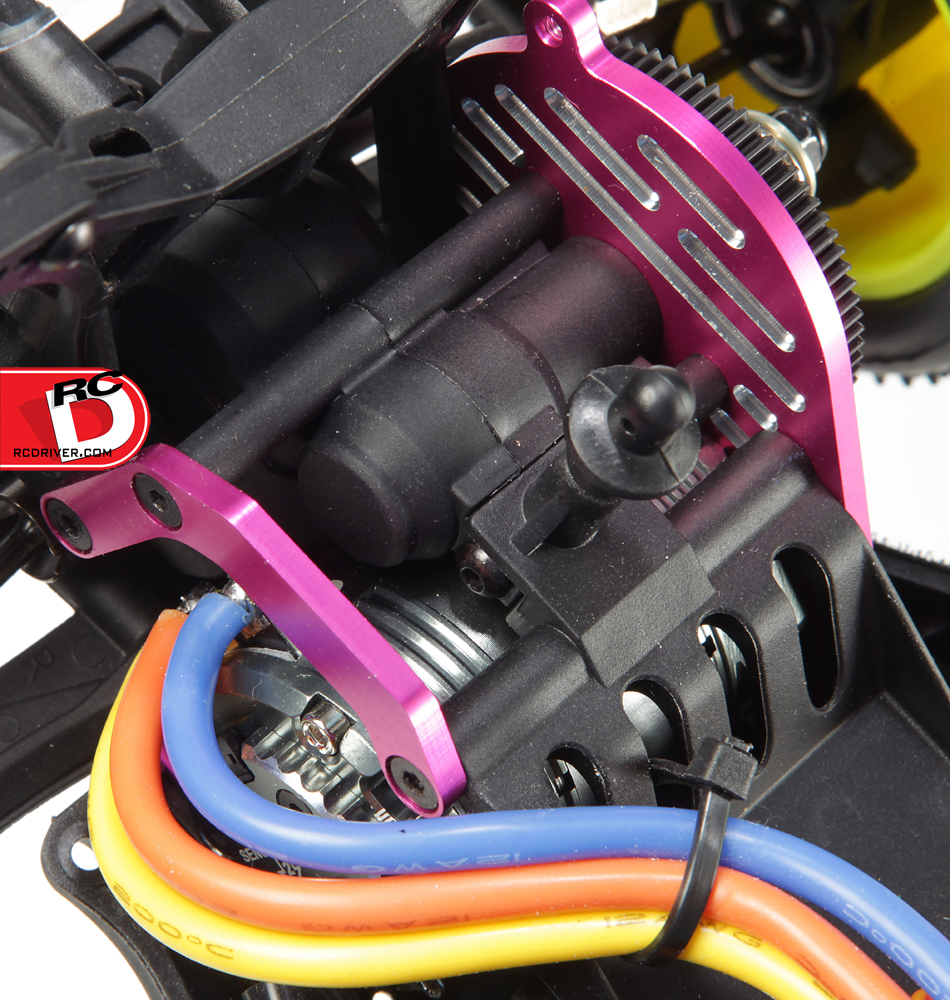
The Ares Pro 8.5 Turn motor has a fantastic top speed that well-compliments the capabilities of the Cactus. It is super smooth, has plenty of torque so it gets up to speed in a jiffy and has lots of top end to generate ample speed to clear big jumps. I also like that it has two sensor ports to make for easy wiring, no matter the vehicle that it is installed in.
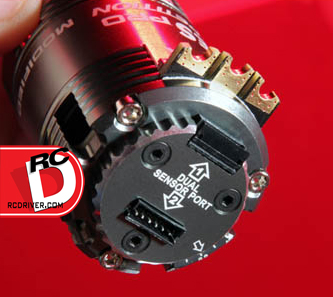
Spektrum S6040 Digital Surface High Speed Digital Steering Servo
To snap the wheels from side to side, I went with the titanium-geared S6040 from Spektrum. It is quick with a .08 sec rating at 6v and has a whopping 167 oz.-in. of torque, more than enough for a 2WD 1/10-scale buggy.
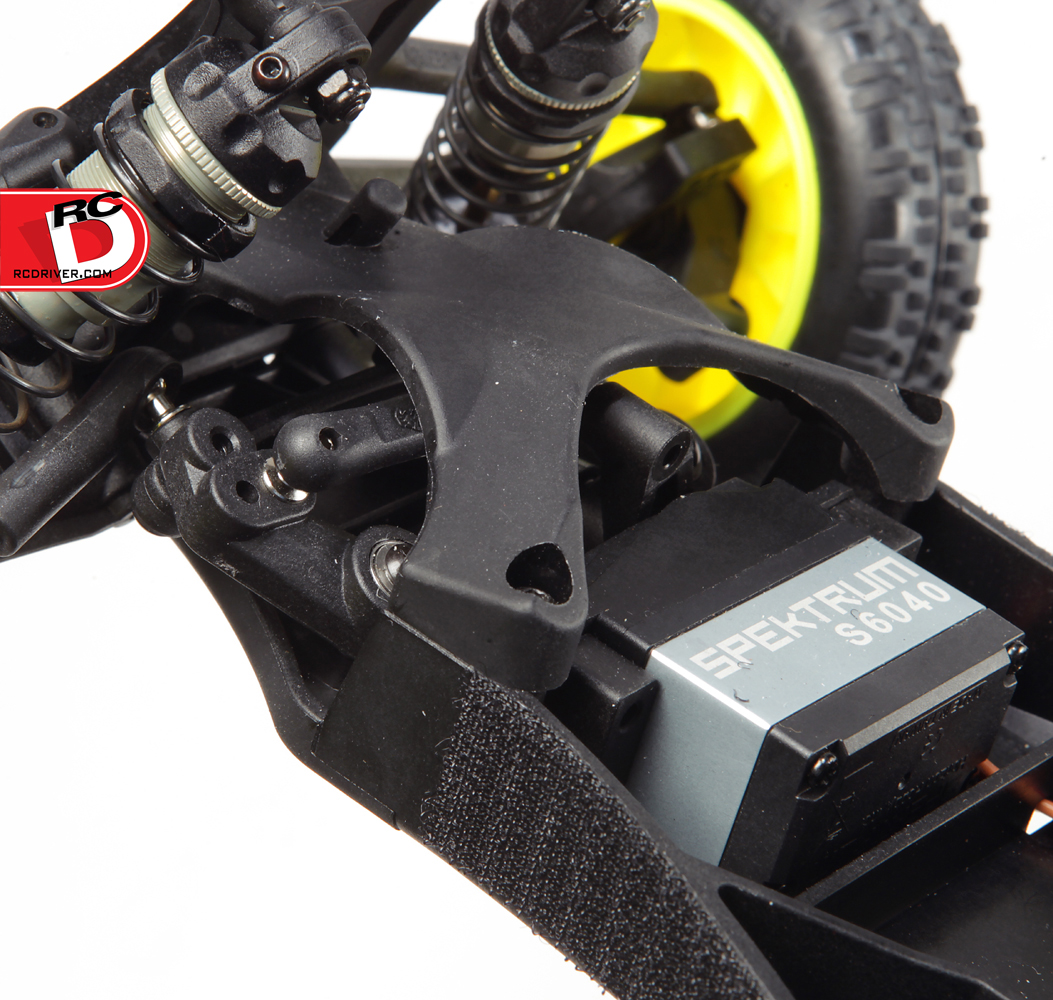
ADDITIONAL ITEMS USED
- New Wave 4800mAh 75C Shorty LiPo battery pack
- Schumacher Yellow Compound Mini Pin rear tires
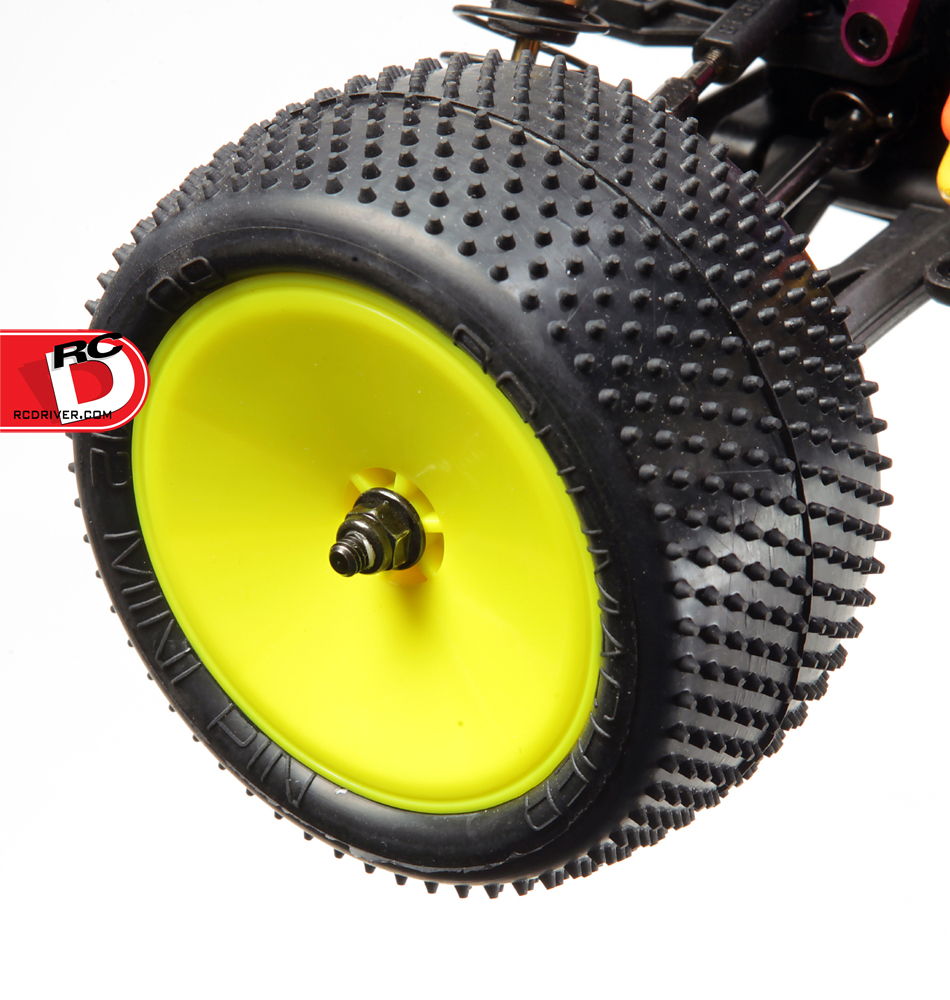
- Schumacher Yellow Compound Stagger Cut front tires
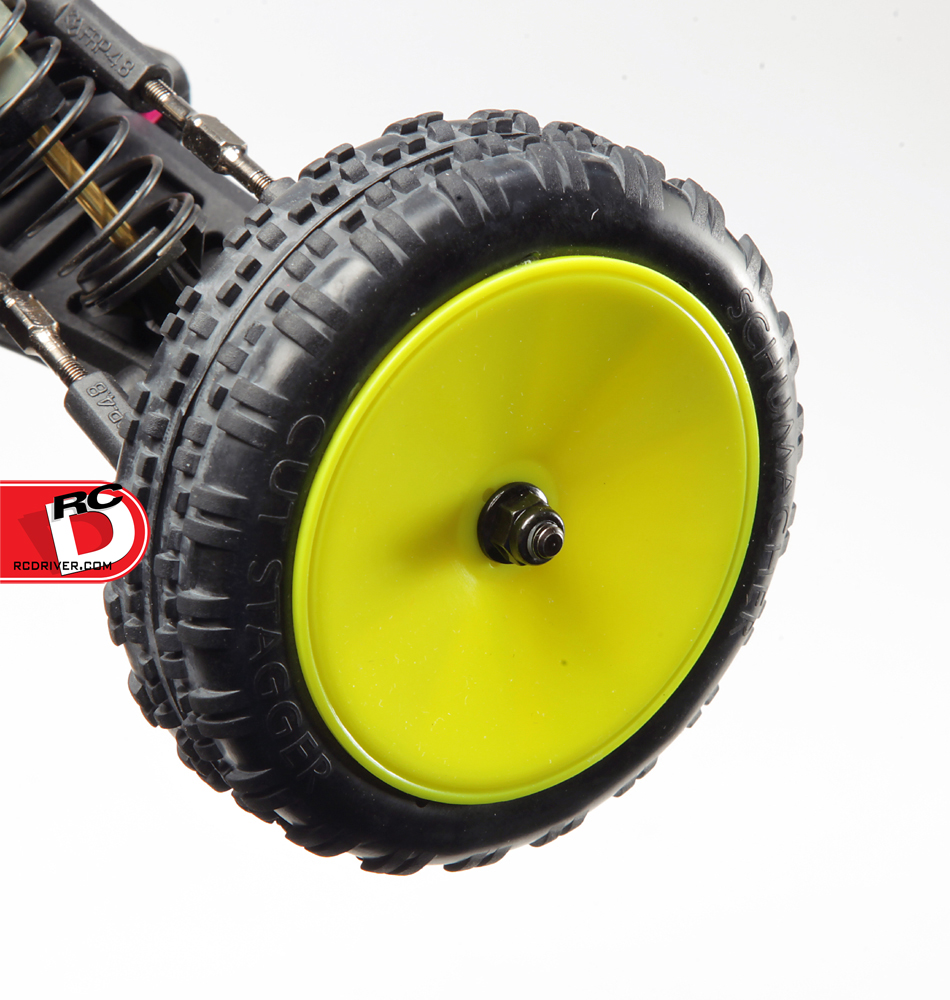
- Spektrum DX4R Pro transmitter
STEERING Understeer Neutral Oversteer
Driving on the high traction carpet at R/C Madness in Enfield, CT, the mid-engine Cactus has more than enough steering. In fact, it took me a bit to get used to how responsive the car was and I had to turn the steering dual rate down on my Spektrum DX4R Pro radio. Once I was used to driving it and had it properly trimmed, the Cactus could turn on a dime anywhere, at any time, making navigating the tight infield quite fun to drive on.
ACCELERATION Poor Fair Good Very Good Excellent
The combination of theSkyRC Toro TS120 speed control, 8.5-turn Ares Pro motor and shorty New Wave LiPo battery pack allowed the Cactus to lunge forward and take off like a rocket when I grabbed for the throttle. At first, the slipper clutch was a tad too tight and would pull the front wheels off the ground when the Cactus would accelerate quick and hard. A simple adjustment of the slipper spring alleviated this and made the Cactus accelerate smooth and straight and kept the front wheels on the ground for the most part. I then moved the battery as far forward as possible to help the front end stay more planted. This worked perfectly and the Cactus was not only quick, but stable.
BRAKING Poor Fair Good Very Good Excellent
The Toro TS120 ESC has a strong, smooth linear brake. I used the Bluetooth module and my iPhone to make a few adjustments on brake strength and drag brake and this really helped dial the Cactus in. I found that medium brake strength, combined with just a small amount of drag brake, allowed the buggy to carry good speed throughout the entire track and did not scrub off all that much speed.
SUSPENSION Poor Fair Good Very Good Excellent
The suspension set-up on the3Racing Cactus is extremely smooth, plush and responsive, thanks to the well-designed shocks. This enabled me to drive the Cactus into corners very hard because of how well-planted the buggy felt. Likewise, I was also able to grab for the throttle very quickly when exiting a corner, increasing overall speed and lowering lap times.
JUMPING Poor Fair Good Very Good Excellent
With my initial set-up, the nose of the Cactus pointed up a bit too much for my liking. This was one of the reasons I moved the shorty New Wave battery forward in the chassis. This change allowed the Cactus to jump with level attitude, regardless of the size or shape of the obstacle. It also tended to land flat almost every time. On landing, the Cactus would settle quickly, allowing me to reach for the throttle almost immediately or to make a quick corner.
DURABILITY Poor Fair Good Very Good Excellent
High traction carpet can really take its toll on a vehicle, as crashes tend to be harder and more violent and the transmission takes more abuse. Even so, the 3Racing Cactus performed very well and just showed basic signs of wear.
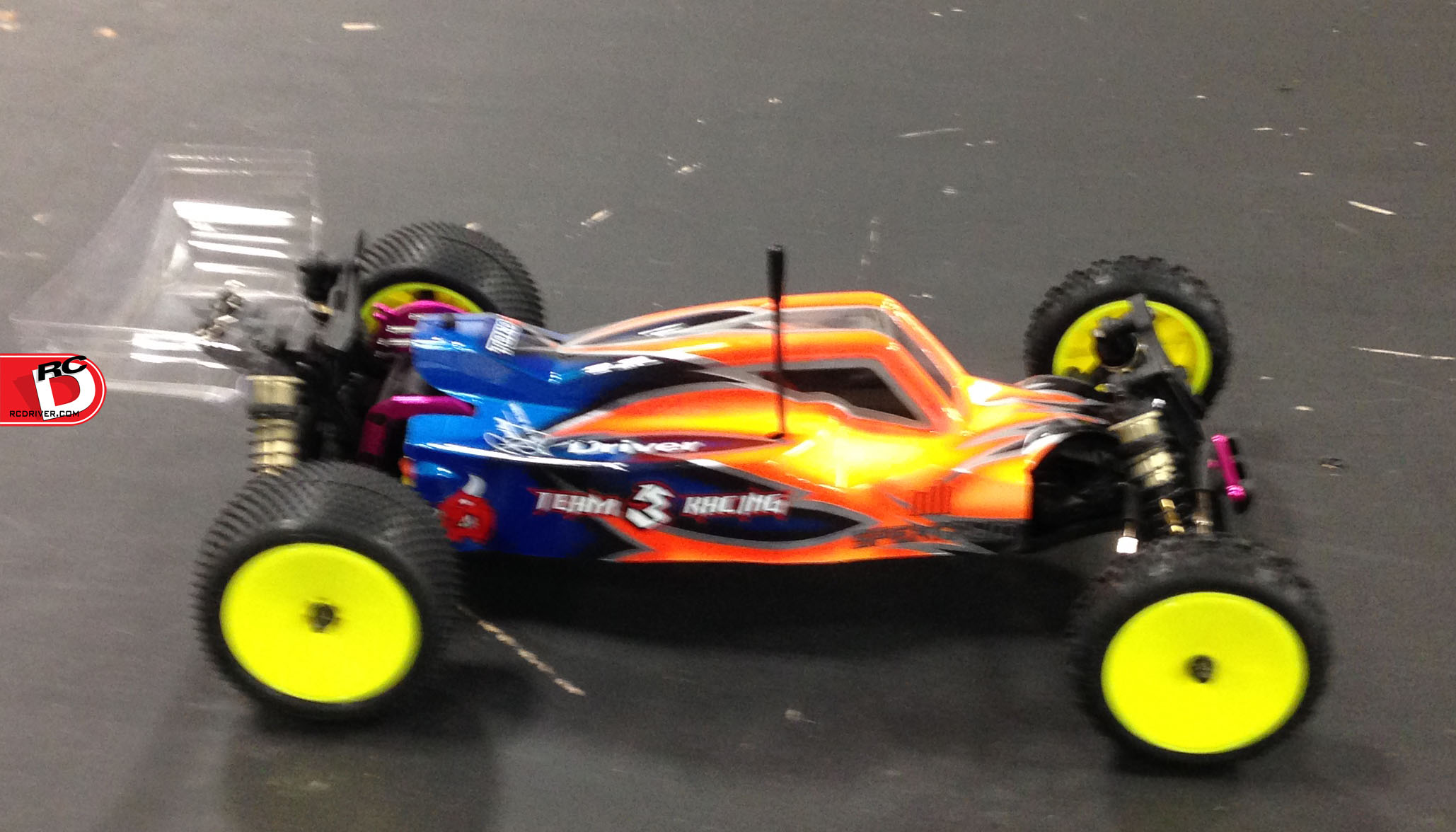
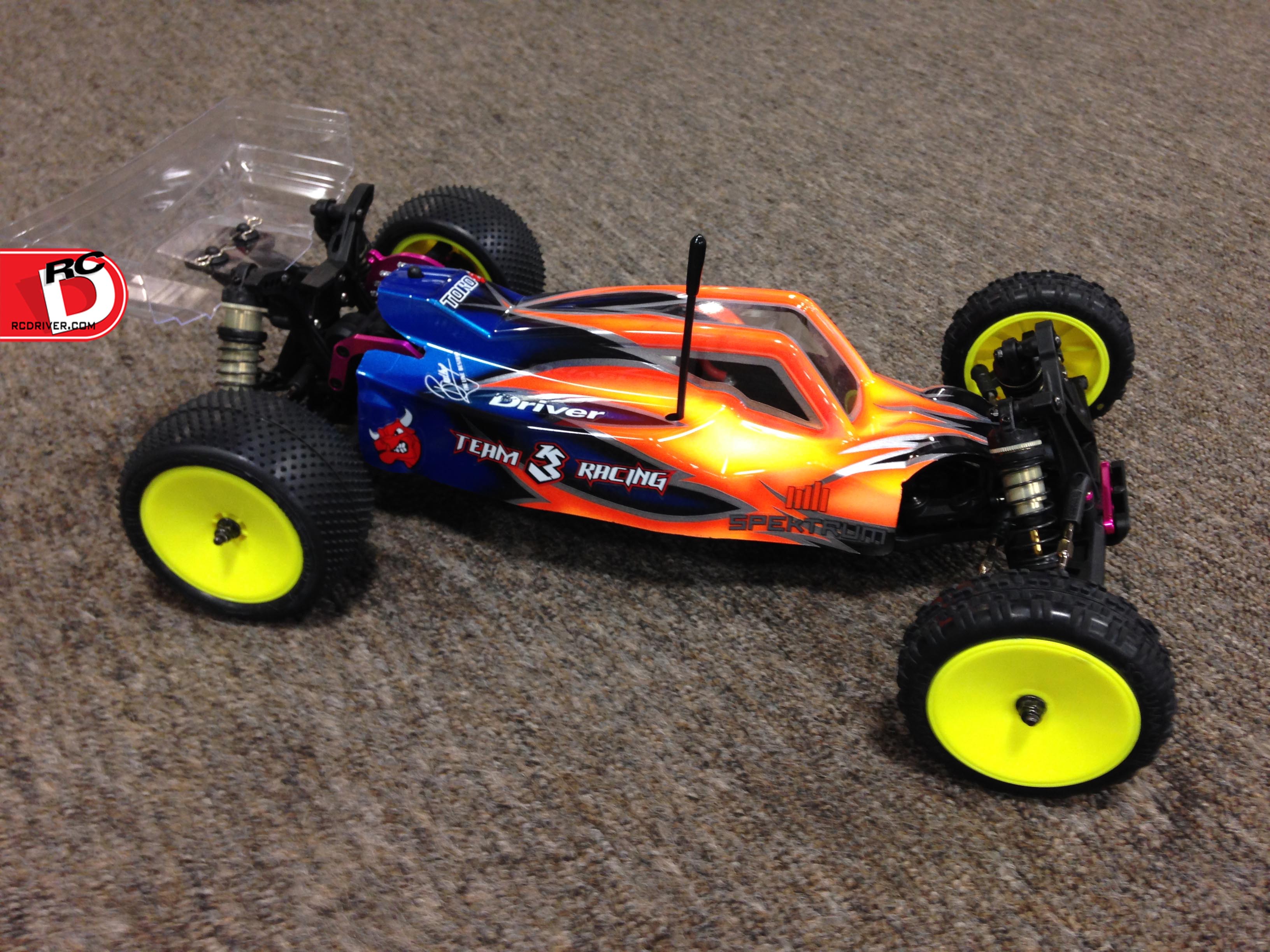
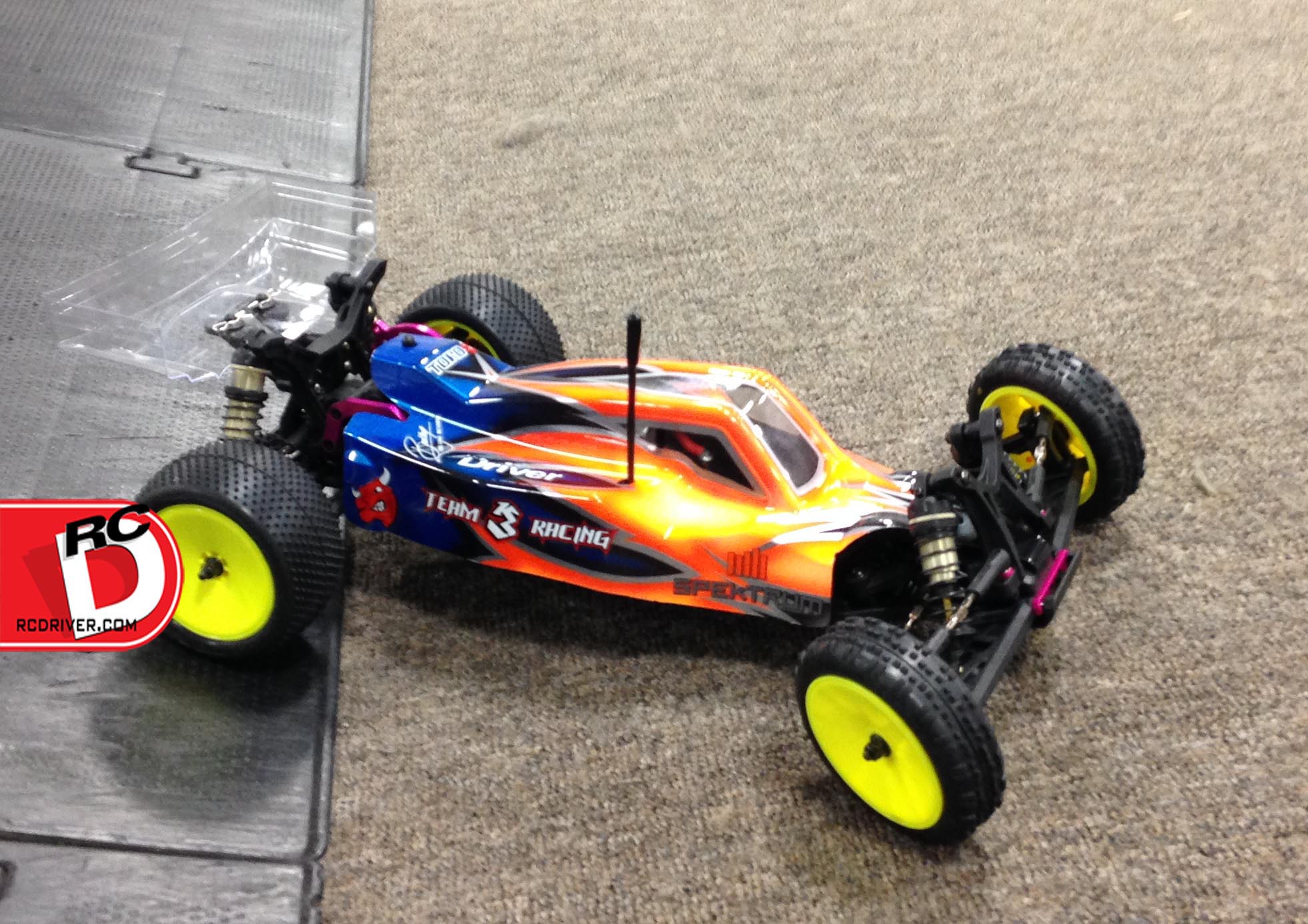
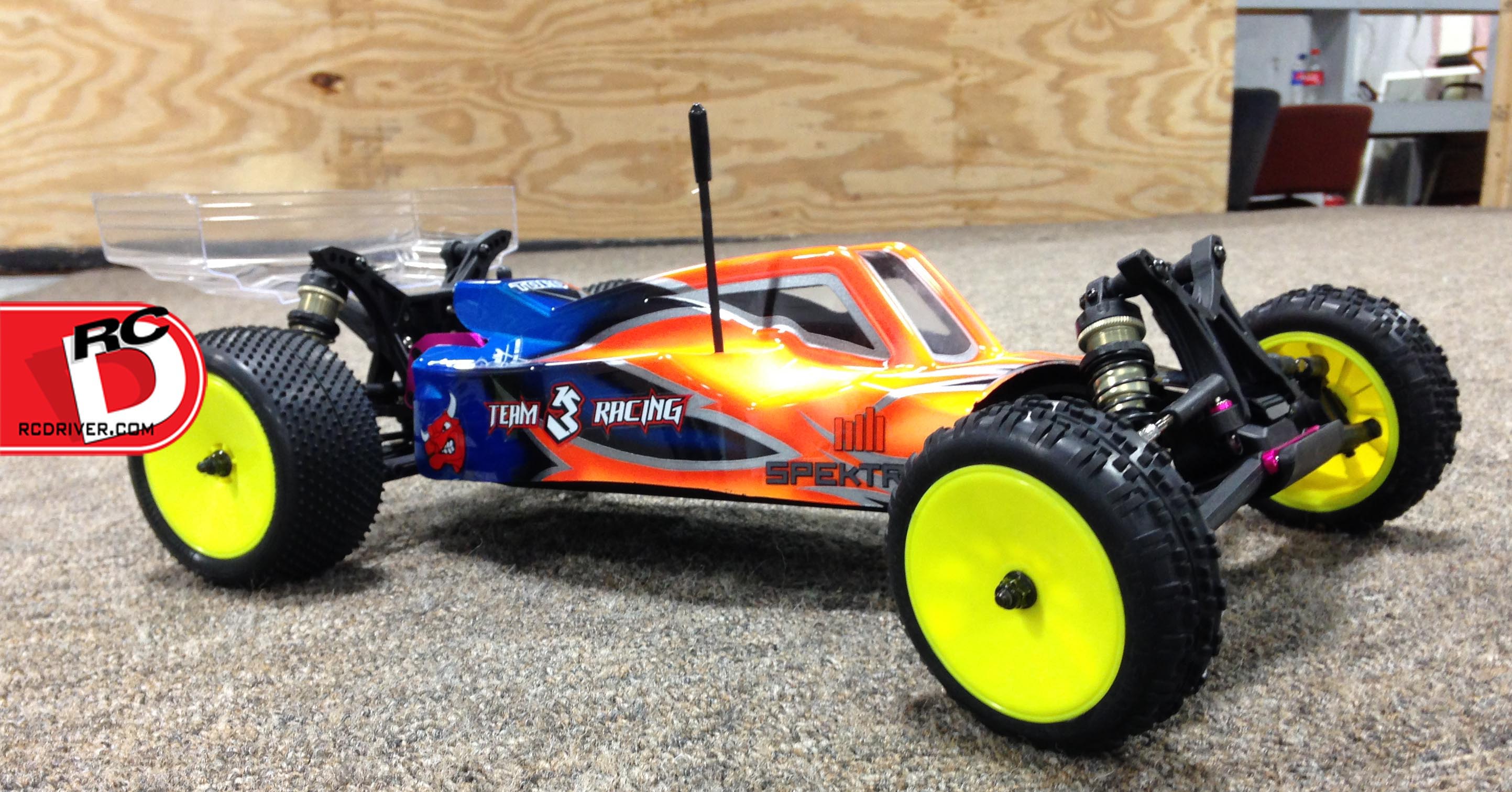
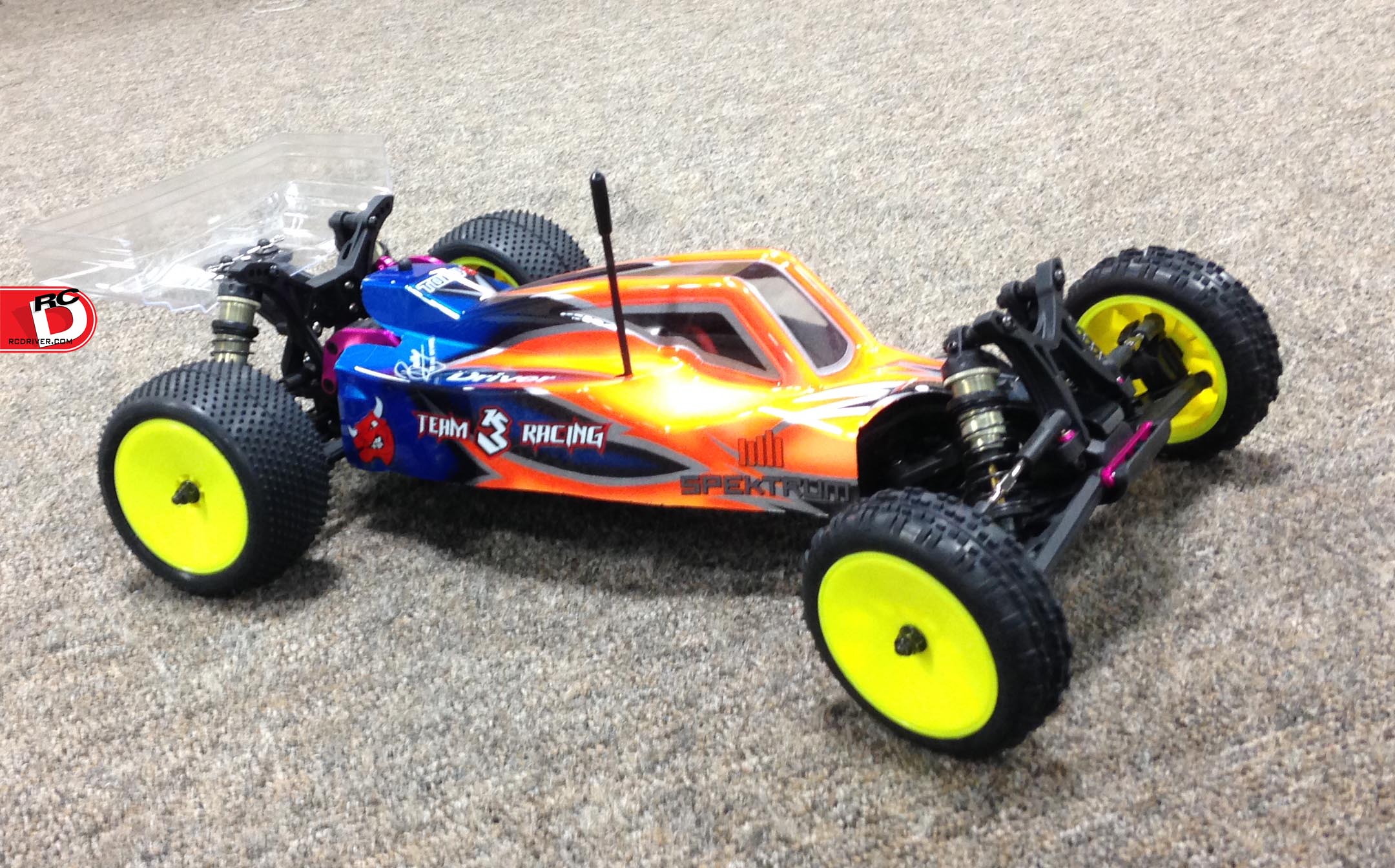
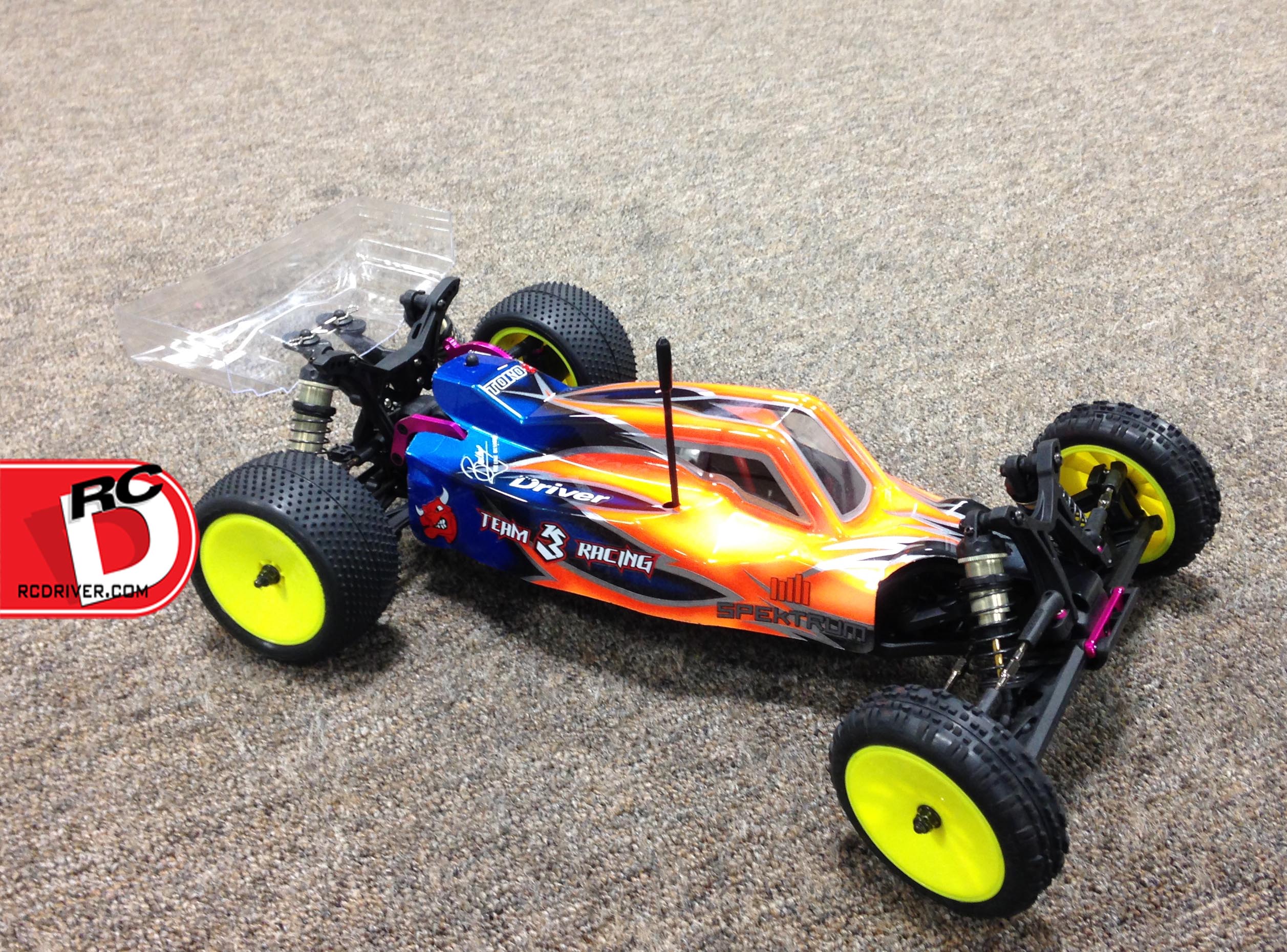
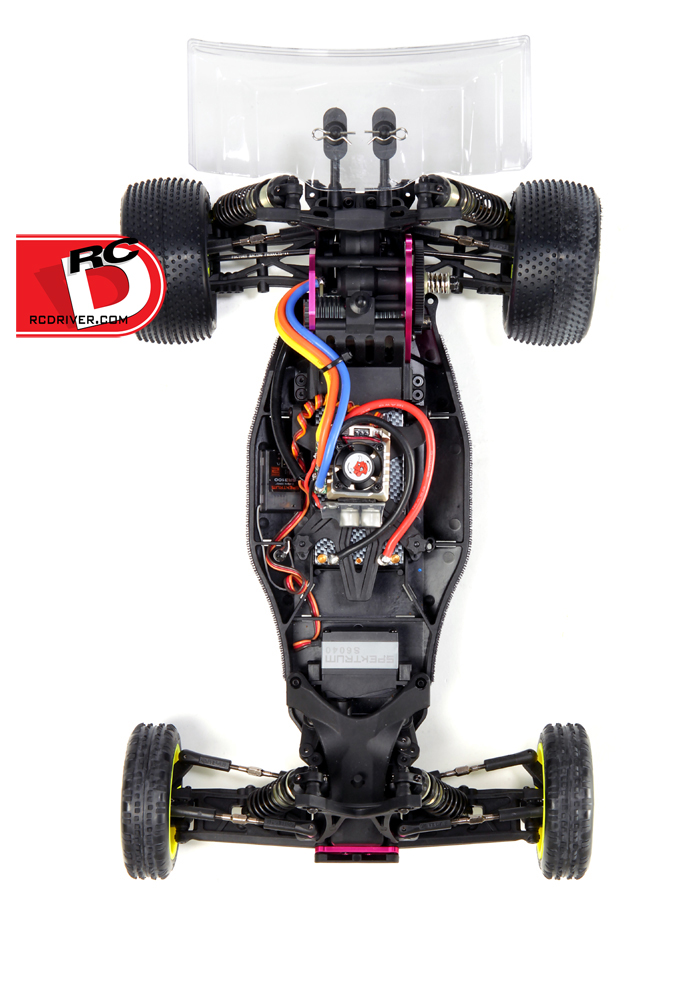
SPECS & TUNING OPTIONS
Body, wheels and tires
Body: Cab-forward style clear polycarbonate
Wheels: Dish style
Wheel adapter type: 12mm hex
Tires: Not included
Suspension
Type: 4-wheel independent
Shock positions: (F) 3-tower, 3-arm, (R) 4-tower, 3-arm
Camber: Adjustable turnbuckles
Roll: Adjustable ball stud heights
Wheelbase: Adjustable shims at hubs
Ride height: Threaded shock bodies
Steering
Type: Dual bellcrank
Toe: Adjustable turnbuckles
Chassis
Type: Tub
Material: Composite plastic
Drivetrain
Type: 2WD
Transmission: 3-gear in rear configuration, 4-gear in mid configuration
Differential: Ball diff
Clutch Type: Adjustable slipper
Gear ratio: Optional pinion or spur gears
Bearings: Full set of shielded
WRAP UP
There is no denying that each configuration of the Cactus is suited for different environments. The rear-engine performed well on low traction off-road dirt while the mid-engine configuration I just tested was near-perfect on indoor off-road carpet. It is very well priced, versatile and reliable and most of all, it is as competitive as almost any other 2WD off-road buggy presently available. If you do not want to follow the masses in the crowded 2WD buggy class, try a Cactus…you will be very pleasantly surprised.
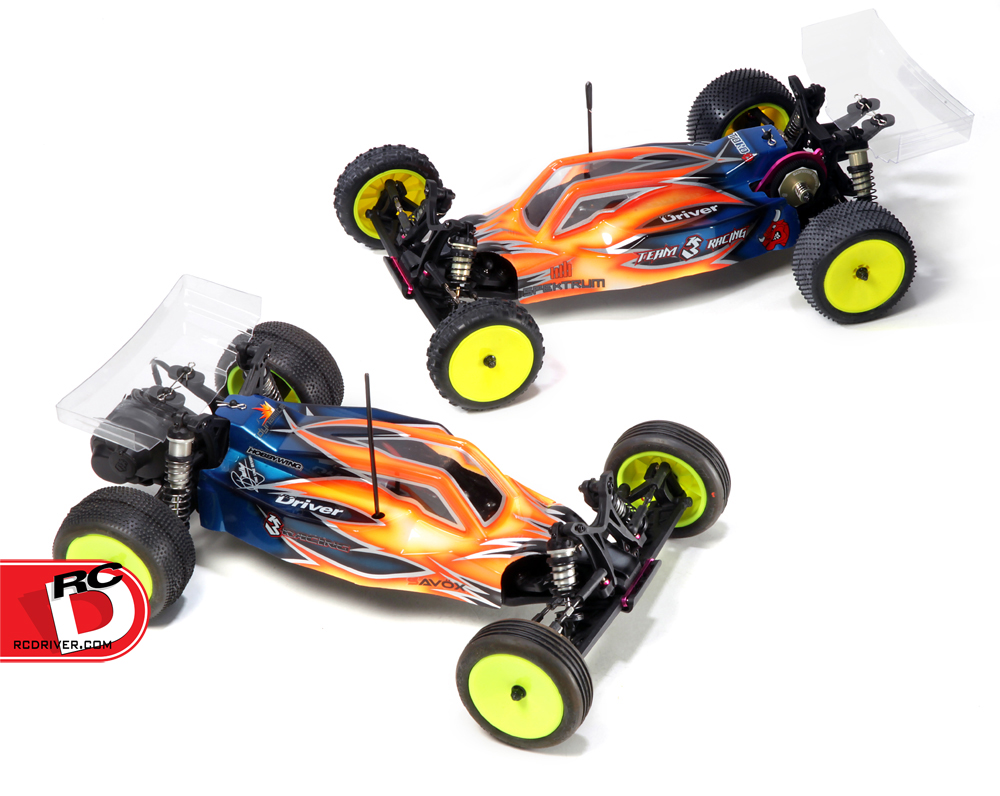
LINKS
3Racing, www.3Racing.hk
New Wave, www.rcmadness.com
Schumacher, www.racing-cars.com
SkyRC, www.skyrc.com
Spektrum, www.spektrumrc.com
